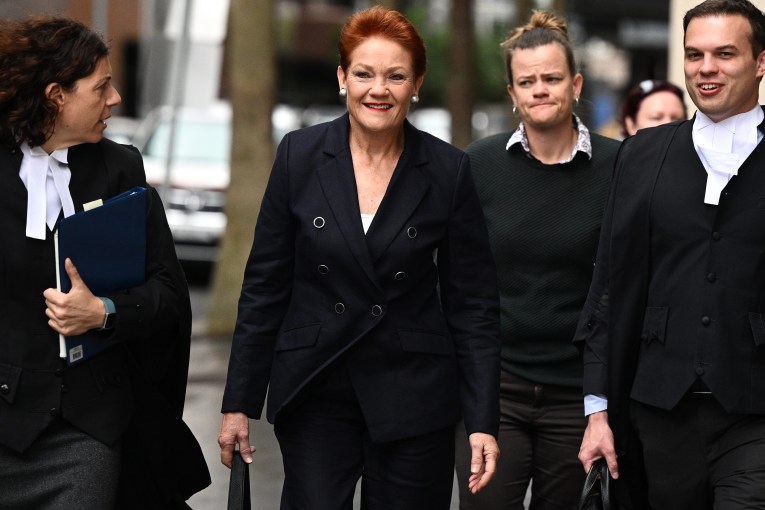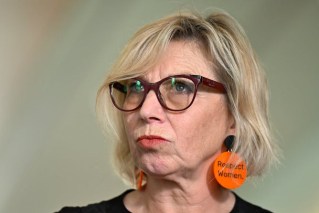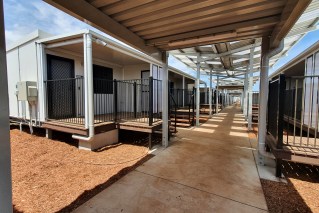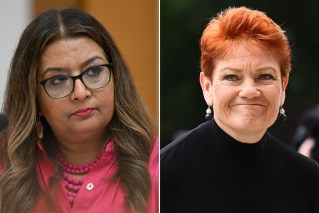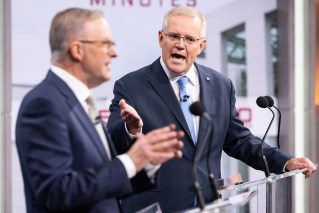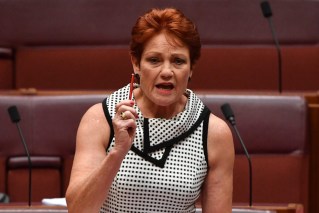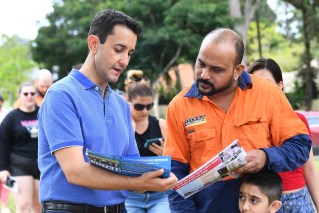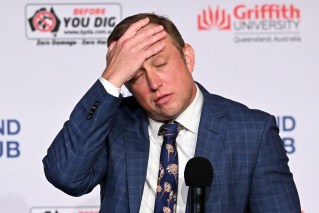Dennis Atkins: Is Brisbane about to become the Greenest city in Australia?
Next March the Brisbane City Council elections could be historic both for local government in South-East Queensland and politics nationally. Dennis Atkins has a look and all he can see is the colour green.

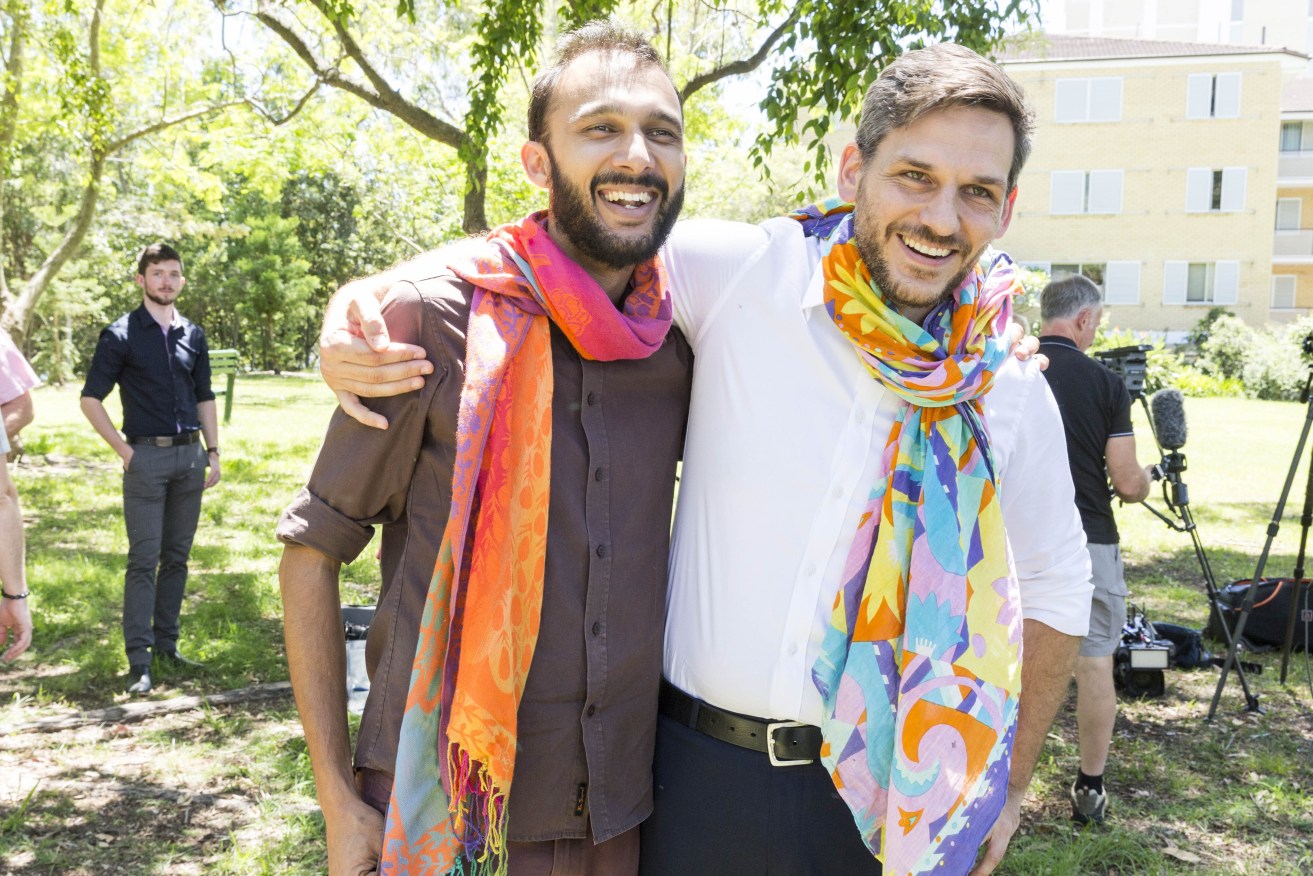
Greens Member for Maiwar, Michael Berkman and former Brisbane City councillor Jonathan Sri at a press conference in Brisbane, Thursday, December 7, 2017. Michael Berkman now holds the seat of Maiwar for the Greens and Sri will contest the Lord Mayoralty. (AAP Image/Glenn Hunt)
If the last federal election was a “green slide” as Greens Party leader Adam Bandt labeled it, the Brisbane City Council polls on March 16 next year could be the full turf rollout for a suburban oval.
The Brisbane City Council has been lopsided towards the Liberals – first as a stand-alone party and then the merged LNP in 2008 – since Jim Soorley left the scene as Lord Mayor just before the 2004 election.
That poll heralded the arrival of Campbell Newman – first as Lord Mayor and then a sharper and briefer stint as premier.
At Newman’s first election Labor lost one ward but held the slimmest of majorities. The party has been going backwards since – losing two thirds of the 15 wards they held in 2004.
As the 2024 poll looms – the 7th under fixed four year terms – that miserable deficit Labor carries could well become much, much worse. Labor, the party that gave Brisbane larger than life mayors like Soorley, Frank Sleeman and Clem Jones, could find itself relegated to a rump with the Greens declared the official opposition in City Hall.
Such a sweep to relative sway, and say, would be the latest step on what has been a long political march that’s turned into a sprint for the Greens in Queensland – and make this state the greenest in the nation. From having often just one tireless campaigner – Drew Hutton – two decades ago, the Greens have moved methodically, purposefully and, now, successfully across one, then two and, finally, three tiers of government.
A surprise defection from Labor to the Greens in 2008 made Ronan Lee the nascent party’s first MP in state parliament but his time was short. Scott Emerson took the seat for the LNP a year later – only to lose it two terms later to local Greens activist Michael Berkman.
Berkman was joined at the 2020 state poll by Amy MacMahon who saw off the once invincible former deputy premier Jacki Trad in South Brisbane. The Greens might have made it three seats with a just-missed result in the inner-west Brisbane seat of Cooper where Katinka Winston-Allom finished with more than 30 percent of the primary vote.
In 2010 Larissa Waters was elected as a Senator and is now joined by Penny Allman-Payne from Central Queensland. Six years on and Jonathan Sriranganathan broke through in local government taking the previously safe Labor ward of the Gabba.

Sartorially splendid Greens ex-Brisbane City Councillor Jonathan Sri, who will contest the Lord Mayoralty at next year’s council election. (AAP Image/Darren England).
Federally, the Greens had just begun. In 2022 they were active everywhere while Labor tip-toed with a small bore, timid agenda.
The Greens Party wins stretch in every direction from Queensland’s CBD – they won the seats of Brisbane, spreading out to the west, north-west and inner north; Ryan, an urban into ex-urban sprawl to the west; and, Griffith, the former domain of prime minister Kevin Rudd, which extends from the grunge of West End to the newly developing aspirational suburbs around Murarrie.
This trio of lower house MPs shared the flights to Canberra with Allman-Payne. No wonder self-styled campaigning wunderkind Max Chandler-Mather can’t stop grinning.
The next step on the road to Queensland becoming prime Greens Party real estate will be next March’s local elections. The Greens Party’s previously incumbent councillor, Sriranganathan, known as Sri, stood down in the last 12 months of the term, paving the way for a replacement without a by-election, giving new ward member Trina Massey the advantage of one shot at re-election.
Not that she’ll need much extra help. In 2020 Sri walked to a win in the Gabba with a swing of more than 12.5 percent, allowing him to raise his arms with 65 percent of the two party vote.
Across Brisbane, the Greens Party was the only group able to boast a swing in its favour – up by 3.3 percent. The Liberals – who finished the contest with wins in 20 wards – might not have been so successful if the Greens Party had picked up just a few thousand more votes in four wards.
Inner city Paddington was down to the last votes counted with a 5 point swing to the Greens Party, who fell short with 49.6 percent. Walter Taylor, a little further west, saw a swing to the Greens of almost 12 percent leaving the “minor” party with 47.7 support.
Brisbane Central was close – not much changed in the vote but there was still a squeaky 0.4 percent deficit behind the Greens Party – and Pullenvale might have looked safe on paper but there was a mortality confronting 8 percent swing. Across Brisbane the Greens Party had swings to them in 21 of the 26 wards. It was a formidable and, for Labor and the LNP, a foreboding result.
Labor might look like it’s reached a floor with its current five out of 26 wards but it can – and probably will – go backwards. Morningside, within the federal, now Greens-held, seat of Griffith is being contested after a Labor resignation and should be safe with a 10 point margin but in these times should not be treated as secure.
Not one bit: any inner-Brisbane weakness in support for major parties, the Greens Party could scoop up the spoils in a ward like Morningside.
The bayside ward Wynnum-Manly could also see change after Labor’s Peter Cumming’s retirement. His Labor replacement Sara Whitney is seen locally as having been parachuted into the ward against the wishes of locals.
High property prices driving an increasingly aspirational voting demographic might well see this once safe Labor ward difficult to hold and give the LNP a chance to mitigate other probable losses.
If these moves emerge as cold, hard realities for Labor, ALP numbers in City Hall would shrink from five to as few as three.
The Greens Party, meanwhile, are not just a chance in Morningside. They are seen as almost certainties in Paddington, Walter Taylor and Central. Pullenvale is regarded as a very good chance as a fourth LNP ward to flip to the Greens.
If the Greens Party go from one ward councillor to four or five, at least, Labor sinks to a rump in the corner – an embarrassment that could be made worse if low Labor votes in wards such as Holland Park, Enoggera, Hamilton and Coorparoo are bad enough to help the Greens Party.
The permission point for these changes might be seen in the future as the wins Chandler-Mather and his compadres had at the last national poll. The Greens are no longer the frightening extremists the mainstream parties and media make them out to be.
A last piece of recent history underscoring the weakness of Labor’s position in Brisbane local government contests is this: the ALP hasn’t won a ward from the Liberals or the LNP since 1997 – otherwise known as last century.
